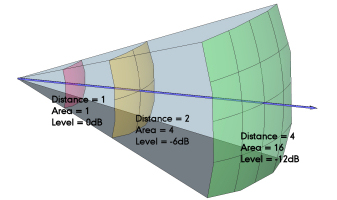RSSI stands for Received Signal Strength Indicator. It is a measure of the power level of a radio signal being received by a device, for example a smartphone, in dBm (decibel-milliwatts). The RSSI is accessible to receiving devices via APIs such as the standard iOS and Android Bluetooth libraries.
The RSSI value is typically used to get an indication of the distance between a device and a beacon. A higher RSSI value indicates a stronger signal and therefore a closer proximity to the beacon, while a lower RSSI value indicates a weaker signal and a farther proximity to the beacon. Note that RSSI is usually -ve so a larger negative more usually indicates the beacon is further away.
RSSI is not a perfect measure of distance, as it can be affected by factors such as the environment and the type of device that is receiving the signal. However, by comparing the RSSI value of a beacon’s signal with the known transmission power of the beacon, it is possible to estimate the distance between the device and the beacon.
RSSI is commonly used in wireless communications such as WiFi, Zigbee, Bluetooth and cellular networks to measure the signal strength of the received signal. It is also used to estimate the quality of the signal, and to determine if the signal is strong enough to maintain a reliable connection.
RSSI is not a standard or a regulated measure and varys depending on the technology and the manufacturer of the device.
The relationship between RSSI and distance is not linear, and can vary depending on the environment and the type of device that is receiving the signal. In general, as the distance between a device and a beacon increases, the RSSI value decreases. However, the rate at which the RSSI value decreases with distance can vary depending on factors such as the environment and the transmission power of the beacon.
In free space, the RSSI value decreases at a rate of approximately 6 dB per doubling of distance. This is known as the inverse square law, which states that the power of a signal decreases proportionally to the square of the distance from the source.

However, in a real-world environment, the rate of decrease can be affected by factors such as walls, obstacles, and interference from other devices, which can cause the signal to weaken faster or slower than expected.
It’s also worth noting that the RSSI value can vary depending on the type of device that is receiving the signal, as well as the type of radio technology used. The sensitivity of the device’s radio receiver will also affect the received RSSI value, a more sensitive device will be able to detect weaker signals at farther distances than a less sensitive device.
While equations can be used to infer distance from RSSI, the above factors mean the most accurate way to determine distance is to compare with previously measured RSSI-distance values.
If accurate distance is essential, up to about 3m, consider using a beacon such as the iBS03R that uses a time of flight (ToF) sensor rather than using RSSI.